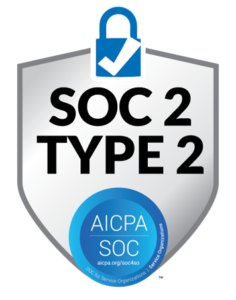Utilizing overtime hours can be a cost-effective way to increase your distribution center’s capacity to meet unexpected surges in business or just to offset soaring turnover. However, if overused, overtime can increase your turnover, even more, decrease your productivity, and ultimately damage your bottom line.
Typically, some portion of overtime hours is unnecessary. Unnecessary overtime hours are the easiest to tackle given the proper visibility tools. The first step in reducing unnecessary overtime hours is to identify the root causes. Overtime can typically be traced back to a few operational issues including:
A lack of labor planning. Labor planning is key to having the right number of people in the right place at the right time throughout the day. Having a plan at the beginning of the day and periodically checking progress against that plan will help in avoiding unnecessary overtime hours. When areas are falling behind information provided by a Labor Management System System (LMS) provides insight into the specific area that needs attention. Having the appropriate labor utilization goals in place is key to managing your floor management team’s performance.
Low productivity levels. A large contributor to unnecessary overtime expense is related to lower than necessary performance levels. Utilizing Standard Operating Procedures (SOPs), engineered labor standards (ELS), accountability, coaching, and incentive/rewards programs all managed through an LMS will assure your team’s performance is not the primary cause of excessive overtime.
Limited real-time visibility. Real-time visibility is possible using LMS. Once real-time visibility is available, floor managers can make critical utilization and productivity adjustments throughout the day, as necessary, to avoid as much overtime as possible. Many organizations are caught in what we call “The Vicious Cycle.” Here is the definition of that term – a sequence of reciprocal cause and effect in which two or more elements intensify and aggravate each other, leading inexorably to worsening the situation. That happens if an operation is experiencing any one operational challenge related to excessive overtime, excessive turnover, or low productivity.
In summary, low productivity potentially causes high overtime which in turn can cause low morale which in turn causes turnover which in turn causes low productivity. The cycle can be difficult and costly to break without a comprehensive labor management solution to guide the way.
How to Extract Yourself from the Vicious Cycle
A comprehensive Labor management solution helps an organization solve all elements of the vicious cycle including overtime, turnover, low productivity, low utilization, and low morale. Below is a high-level outline of how a comprehensive labor management program helps solve these operational problems.
High over-time
- Advanced Labor Planning calculates specific resource needs based on individual performance levels by activity in the building making your plan much more exact and achievable. Defining your labor needs before the start of the shift also allows for more accurate and effective management of your temporary staff strategy.
- Real-time reporting through an LMS provides out-of-tolerance progress by area allowing your managers to focus their time on the specific areas that are most impactful to the operation.
High turnover
- Finding the root cause of turnover is critical to solving the issue. Yes, excessive overtime can cause people to leave your organization but all too often it is the lack of a competitive wage that has people looking for other places to work. Implementing a self-funding incentive program not only can spur an increase in productivity levels but helps bridge the competitive wage gap in yours.
- After excessive overtime and low wages, culture is also at the top of the list as to why employees seek a new job. LMS can aid your management team in executing culture-defining programs such as incentives, rewards, recognition, coaching, and general engagement events to build the relationship between employee and manager. These programs can result in a company’s ascension to an “employer of choice” status.
Low Productivity
Today’s labor management programs are specifically designed to solve low productivity. The following core elements of a comprehensive labor management program support a high-performance operation.
- Leaned out operations
- Defined SOPs
- Multi-determinant engineered labor standards or reasonable expectancies
- Labor Management System Software
- Accountability, coaching, incentive pay, and recognition programs
- A comprehensive change management approach
- Corporate Performance Management Alignment
- Executive sponsorship
Whatever the cause, excessive overtime, and the potential “vicious cycle” presents an opportunity to leverage labor management technology to better plan, and manage your operation in real time, improve your culture, boost workforce performance, and reduce your cost per unit. For more insight Schedule a Demo or Free Operational Labor Audit.
You can also use our Contact Form and someone from our team will reach out to help or call us directly at (800) 229-3450.
Related TZA Resources
TZA Best Practices for Onboarding Your Workforce
TZA Engineered Labor Standards – The Foundation for a High-Performance Workforce


